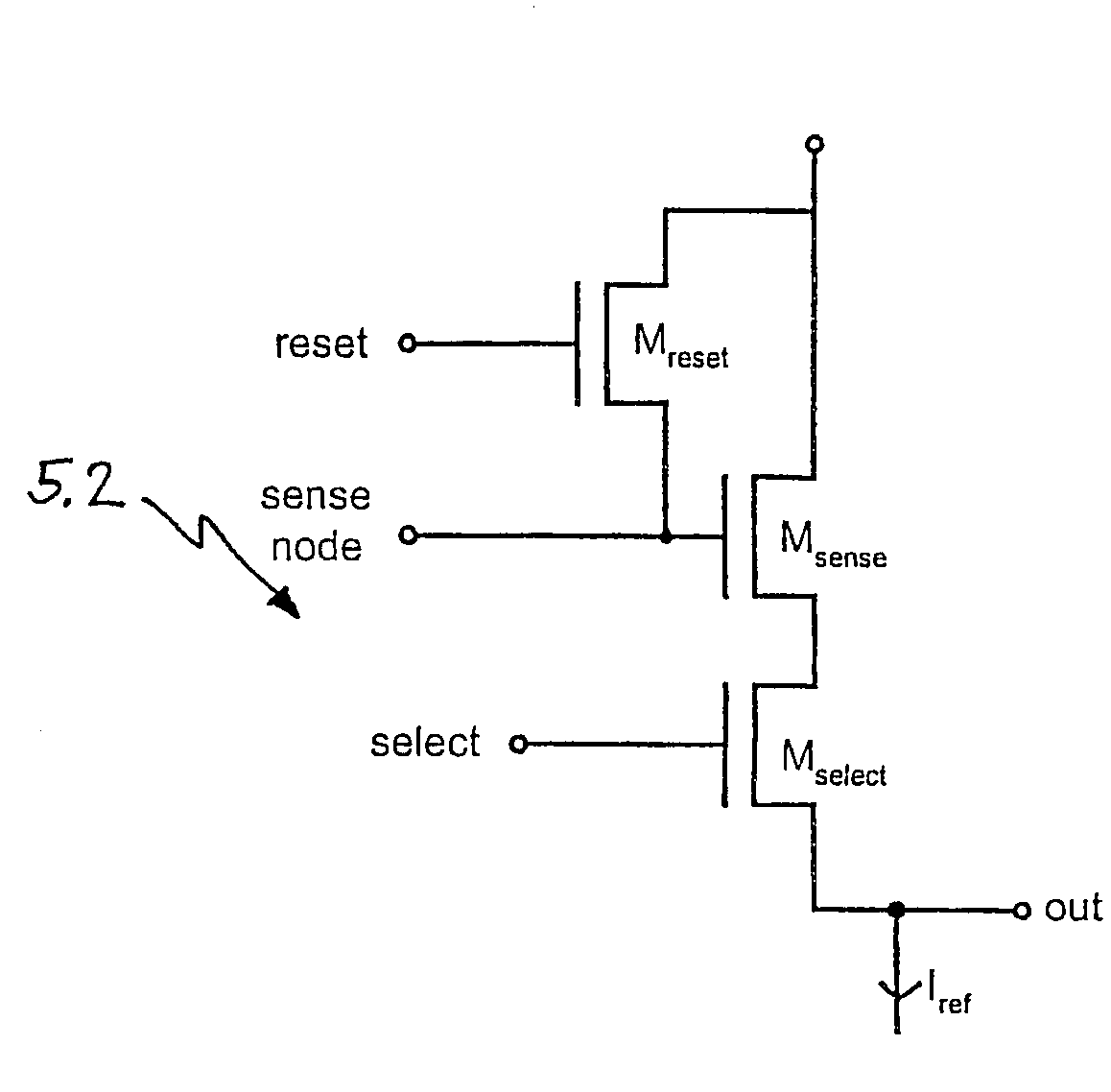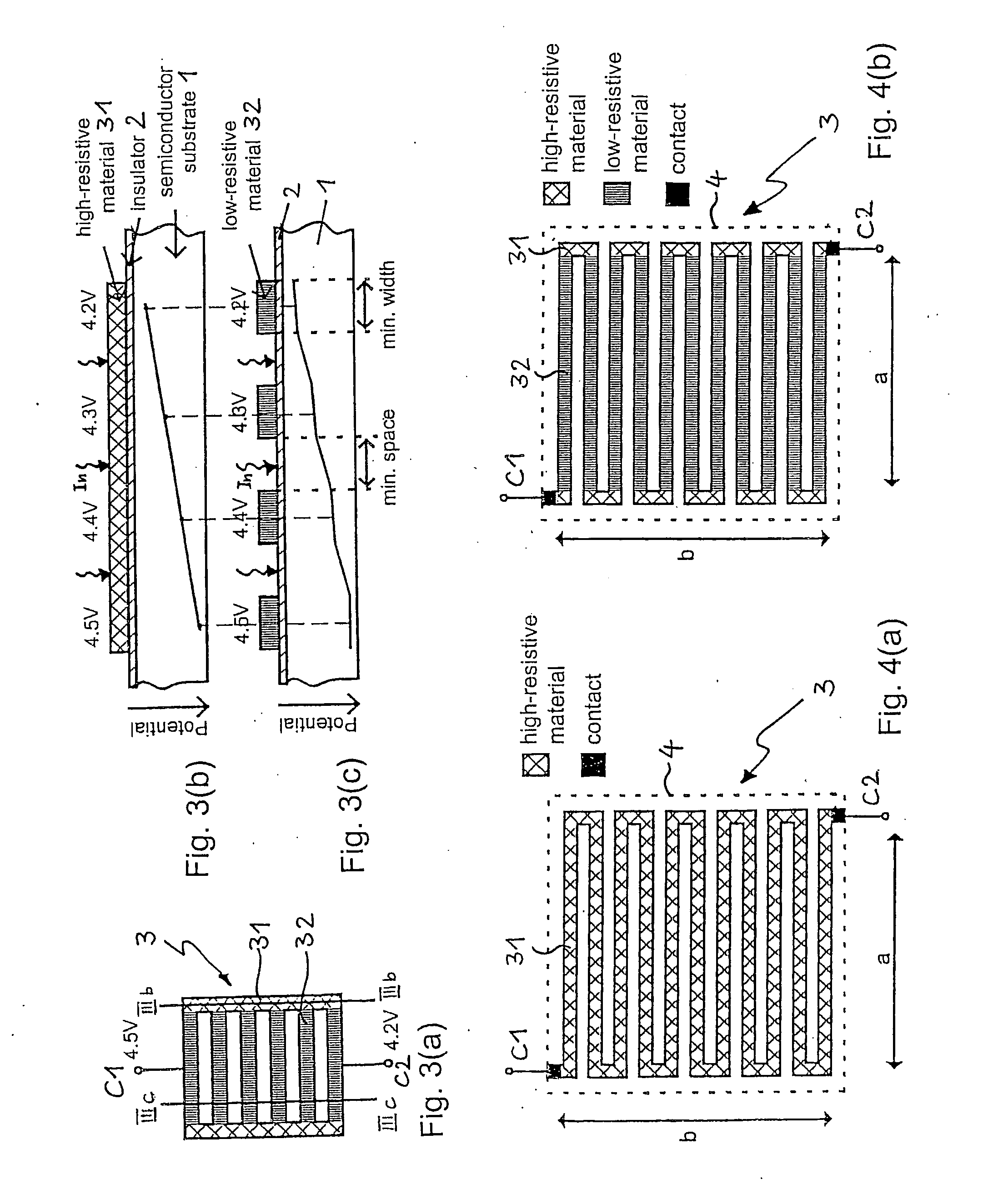Large -area pixel for use in an image sensor
a large-area pixel and image sensor technology, applied in the field of large-area pixel for use in an image sensor, can solve the problems of monotonous increase, high electrical power consumption, and inability to realize such conventional photo sensors that are at the same time very large and highly sensitive, and achieve the effects of low electrical power consumption, minimal electrical power consumption, and large sensing area
- Summary
- Abstract
- Description
- Claims
- Application Information
AI Technical Summary
Benefits of technology
Problems solved by technology
Method used
Image
Examples
Embodiment Construction
[0058]Cross-sections through an embodiment of the pixel according to the invention are shown in FIGS. 3(b) and 3(c). The new pixel architecture makes use of a semiconductor substrate 1, such as a silicon substrate, for the conversion of incident radiation In into electron-hole pairs. Without loss of generality, one can assume in the following that this semiconductor material 1 is p-doped and that one wants to detect electrons as minority charge carriers in the semiconductor material 1. All subsequent arguments can be suitably modified to hold true for the detection of photo-generated holes as minority carriers in n-doped semiconductor material. The semiconductor substrate 1 is covered with a transparent insulating layer 2, preferably an oxide, as available in industry standard CMOS processes. The oxide-layer thickness is chosen in the range of 1 nm to 500 nm, according to the specifications of the selected semiconductor process, in order to transfer a large part of the electric surf...
PUM
 Login to View More
Login to View More Abstract
Description
Claims
Application Information
 Login to View More
Login to View More - R&D
- Intellectual Property
- Life Sciences
- Materials
- Tech Scout
- Unparalleled Data Quality
- Higher Quality Content
- 60% Fewer Hallucinations
Browse by: Latest US Patents, China's latest patents, Technical Efficacy Thesaurus, Application Domain, Technology Topic, Popular Technical Reports.
© 2025 PatSnap. All rights reserved.Legal|Privacy policy|Modern Slavery Act Transparency Statement|Sitemap|About US| Contact US: help@patsnap.com



